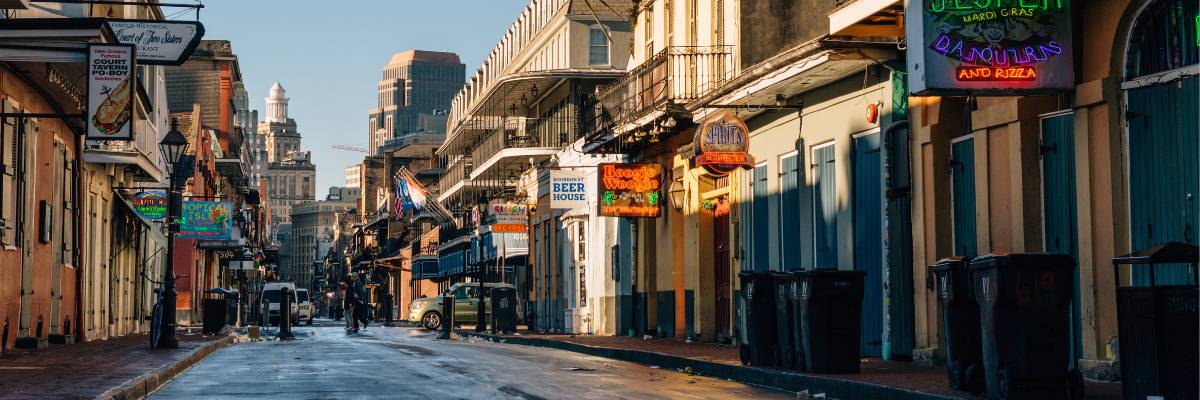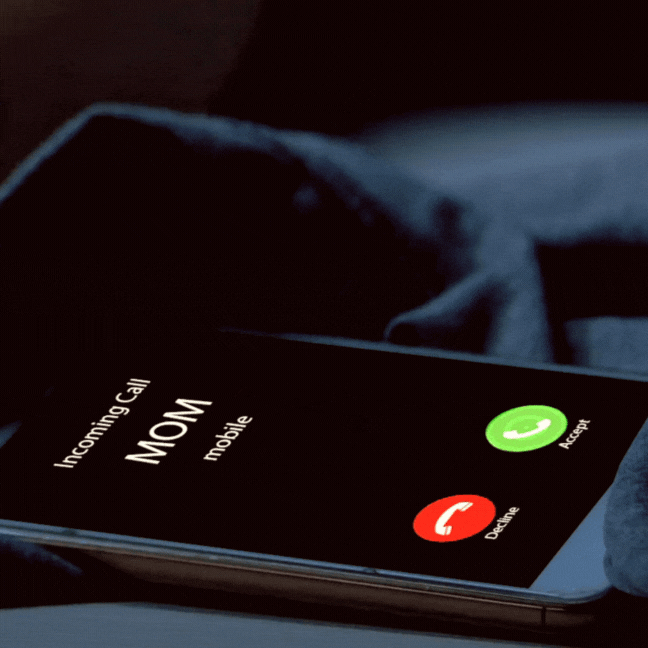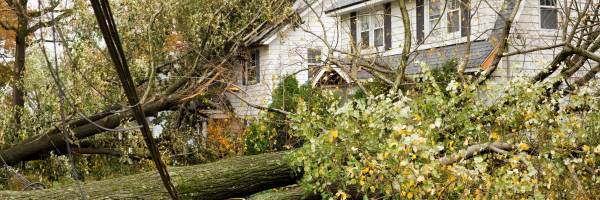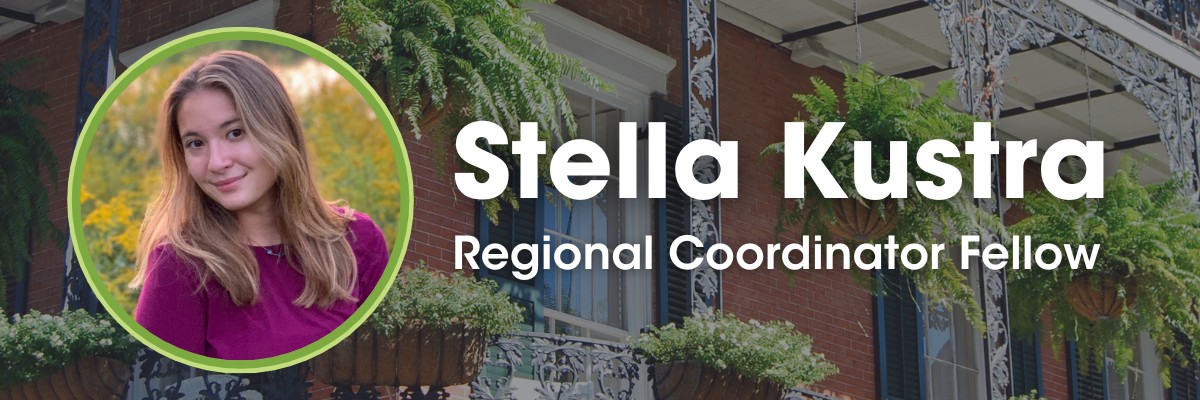#ambassadors
Bouncing Back: Creating Positive Change in New Orleans and Beyond

My first experience of anything to do with our changing climate was in fourth grade. It was wintertime in Chicago, and I was assigned to read the morning announcements. This morning, however, there was a special announcement that I had the coveted job of reading – that there would be no school tomorrow because of heavy snow. We did not have school for three days because the heavy snow became a blizzard. As I played in the snow with my little sister, I wondered what snow days would look like once I left Chicago.
Graduating high school and choosing to leave my cold hometown in search of New Orleans’ warm weather meant a whole new climate landscape impacting me. I traded my heavy down coat and snow boots for knee-high rain boots and an emergency hurricane kit. I wasn’t worried about hurricanes because hurricanes were a rare climate phenomenon in my mind.
During my freshman year, New Orleans was impacted by 4 hurricanes: Laura, Marco, Delta, and Zeta. Laura canceled school for two days and Zeta for three days. Tulane passed out emergency hurricane rations and warned students to not go outside during the storms. I sheltered in my freshman dorm with my friends, laughing and trading snacks from our ration packs as heavy winds battered our windows. I wasn’t worried about the increasing frequency of hurricanes, though, since everything returned to normal immediately after the storms passed. It felt like I was trading my fun snow days of middle school for fun hurricane breaks in college.
“School and life went on, and again, I wasn’t worried. Naively, I was excited for a break this close to the start of school.”
I returned to New Orleans for my sophomore year, not worrying about starting my second year amid a hyperactive hurricane season. As I was decorating my dorm with pictures of my friends and getting my syllabi for classes, news of a Category 4 hurricane brewing in the Atlantic spread throughout campus. I wasn’t worried – Tulane told us it wasn’t predicted to hit New Orleans; the only impact would be a couple days off school. As the weekend and hurricane inched closer, people around me began to panic. Gallon jugs of water were flying off the shelf at our local grocery store, professors were telling us to charge all devices and generators, and the traffic on the I-10 toward Texas slowly increased. Yet, neither Tulane nor the city told us to leave. School and life went on, and again, I wasn’t worried. Naively, I was excited for a break this close to the start of school.

Saturday morning, I awoke at 7 am to a frantic phone call from my mom telling me to “get out of New Orleans.” Late Friday night, Hurricane Ida deviated from its predicted path and was headed straight for New Orleans. Still on the phone with my mom, we found a flight from New Orleans to Houston with seats available, and I quickly packed to leave my halfway moved-in dorm. Thinking I would only be gone for a few days, I threw some random clothes into my backpack and called an Uber to the airport.
Reality began to set in on this drive to the airport. The drive from Tulane to the New Orleans airport would take 25 minutes on an average day. Today, it took me an hour and a half to get there as families fled the city, fearing the worst. Once I arrived at the airport, the line for the TSA went all the way to the baggage drop. Even with pre-check, I waited nearly an hour to get through and was met with a crowded airport of residents evacuating. It wasn’t until late Saturday afternoon that the city declared an official evacuation. By then, all flights leaving New Orleans were grounded as wind speeds picked up.
I watched Hurricane Ida batter my newfound home from my childhood home. The category 4 storm hit the city directly with the worst levels of destruction since Hurricane Katrina in 2005. Its high wind speeds knocked over the Entergy tower, leaving residents without power, water, and cell service in the midst of the August heat. Tulane canceled school for 5 weeks. I watched as news reports poured in, showing streets entirely submerged by water, sump pumps failing and leaking sewage into the air, and fallen trees on power lines causing fires. I watched passively as my chosen home was battered by Hurricane Ida, unable to bounce right back up this time.
As I flew back to New Orleans 5 weeks after Ida hit, I was greeted by a city dotted by blue tarps that replaced roofs blown off by Ida’s winds. With five weeks of time off, money, and access to state-of-the-art equipment, Tulane’s campus seemed unaffected by the hurricane. However, unlike the first 4 hurricanes of my freshman year, I knew better. I knew the city was still recovering, and places less than 50 miles away were still wholly destroyed. Choosing New Orleans meant choosing the city during bad times, not just the good. I wanted to help this amazing city that allowed me to break out of my shell, rebuild and become stronger. I wanted to open the eyes of my fellow students to the world of destruction that existed outside of the gates of Tulane.
“…unlike the first 4 hurricanes of my freshman year, I knew better. I knew the city was still recovering, and places less than 50 miles away were still wholly destroyed. “
Working alongside my professional fraternity, I organized a one-day service trip to Houma, a small community in the southernmost region of the state that suffered some of the worst effects of the hurricane. The population of Houma consists largely of members of The United Houma Nation – a state recognized Indigenous group. Unlike Tulane, the people of Houma found that five weeks after Hurricane Ida, their journey towards rebuilding had only just begun. The roads were strewn with debris, power lines remained in disarray, and numerous homes remained uninhabitable. The devastating impact of the hurricane seemed fresh, as if it had struck Houma mere days, or perhaps mere hours, before our arrival.
With open hearts and willing hands, we immersed ourselves in various projects. Some of us helped reconstruct homes, repairing the damage caused by high-speed winds and flooding. Others assisted in community gardens, reviving a sense of sustenance and pride through nurturing the land. We collaborated with local artisans to restore cultural artifacts, preserving the stories and traditions that define their identity.

The excursion to Houma became my catalyst for climate action change. I no longer viewed hurricanes as an insignificant climate phenomenon but as wielders of widespread destruction. My climate journey has sparked a passion for service and a commitment to make a difference within my city and communities far and wide.
Throughout my fellowship with The Climate Initiative, I have witnessed the power of collaborative action and the urgency of addressing climate change. The passion and dedication of local teachers in New Orleans, who tirelessly educate and inspire young minds about the importance of environmental stewardship, have left a profound impact on me.
By fostering a sense of pride and responsibility for our city, TCI, educators, community organizations, and I can create a stronger and more resilient New Orleans. We have established partnerships with local organizations, government entities, and businesses to develop a network of support and resources. These collaborations ensure that we will be better equipped to bounce back and recover quickly in the face of future hurricanes or natural disasters. I am excited to continue my work with TCI and collaborate with like-minded individuals who share the vision of a greener and more sustainable New Orleans. Together, we can advocate for policy changes, support renewable energy initiatives, and empower the next generation to become environmental leaders.
I am forever grateful for the opportunities the amazing city of New Orleans has provided me. It has transformed, empowered, and given me the platform to create positive change. With each passing day, I am reminded of the importance of collective action, and I am proud to call New Orleans my home – a city that faces challenges head-on and emerges stronger and more resilient every time.

